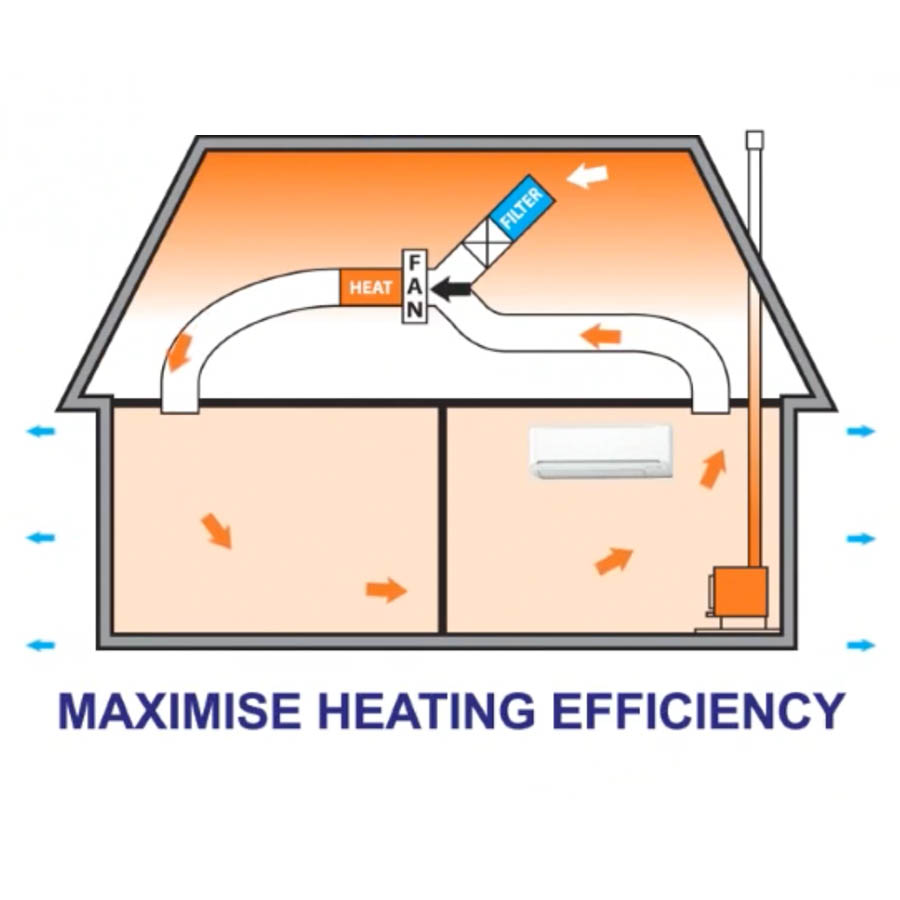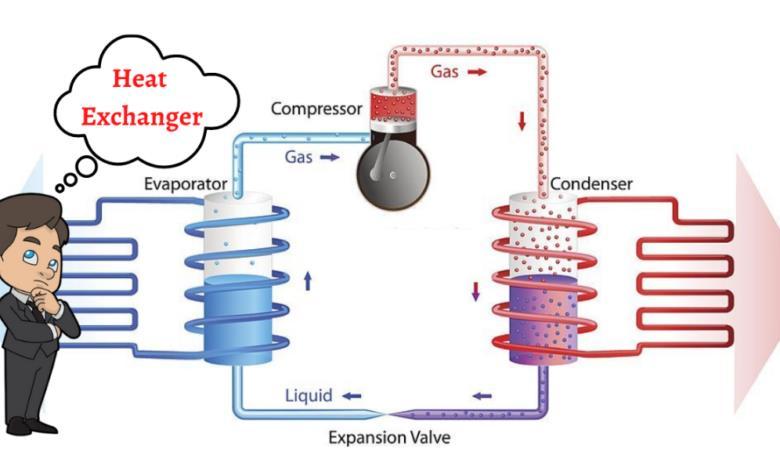How DVS Heat Transfer Systems Harness Next-Gen Fluids to Enhance Thermal Conductivity
Technologies in Heat Transfer Equipments: What You Need to Know for Ideal Efficiency
Innovations in Heat transfer systems are changing efficiency across numerous sectors. Advanced materials like graphene and nanofluids assure significant improvements in thermal conductivity. The integration of IoT and device understanding supplies opportunities for real-time tracking and boosted energy effectiveness. The landscape of thermal monitoring is swiftly progressing. Recognizing these developments is essential for achieving excellent system performance and sustainability in the future. What particular innovations are forming this transformation?
Arising Products for Boosted Heat Transfer

Advanced Heat Exchanger Layouts
While standard Heat exchangers have served their purpose in various applications, progressed designs are currently arising to fulfill the boosting needs for effectiveness and performance. These ingenious styles, such as plate, shell-and-tube, and finned-tube Heat exchangers, integrate boosted surface locations and enhanced flow patterns to increase thermal transfer prices. On top of that, portable styles permit for lowered room requirements without endangering performance. Advanced products, such as composites and corrosion-resistant alloys, furthermore improve longevity and performance under extreme problems. Simulation technologies and computational fluid dynamics are progressively employed to fine-tune these layouts, making sure peak Heat transfer qualities. As sectors look for to minimize energy intake and make the most of result, the fostering of advanced Heat exchanger designs is crucial in attaining these goals.
The Duty of Nanotechnology in Heat Transfer
Nanotechnology plays an essential role in boosting thermal conductivity within Heat transfer systems. By adjusting materials at the nanoscale, researchers have achieved significant improvements in power performance. These innovations not just enhance efficiency but also add to even more lasting power remedies.
Improved Thermal Conductivity
Considerable advancements in thermal conductivity have arised through the application of nanotechnology, changing Heat transfer systems across different sectors. By integrating nanoparticles into Heat transfer liquids and products, researchers have accomplished impressive rises in thermal conductivity. These nanoparticles, such as carbon nanotubes, graphene, and metal oxides, improve the Heat transfer properties as a result of their high surface and unique thermal features. The resulting compounds show improved efficiency in applications varying from electronic devices cooling systems to renewable resource innovations. The ability to customize the dimension, shape, and structure of nanoparticles allows for optimized thermal administration options. As a result, nanotechnology remains to play a pivotal role in the development of a lot more reliable and efficient Heat transfer systems, leading the way for boosted commercial applications.
Energy Performance Improvements

Assimilation of IoT in Heat Transfer Solutions
The assimilation of IoT in Heat transfer systems introduces the application of smart sensing units that boost functional effectiveness. These sensors enable real-time data tracking, permitting immediate modifications and optimizations. This technical development has the possible to substantially improve efficiency and power management in Heat transfer applications.
Smart Sensors Execution
As Heat transfer systems evolve, the assimilation of smart sensing units via the Internet of Points (IoT) has emerged as a transformative strategy. These sensing units allow real-time surveillance of circulation, temperature level, and pressure prices, boosting system performance and reliability. By collecting and transmitting information, they facilitate positive maintenance, decreasing the risk of system failures. Additionally, smart sensing units add to energy cost savings by refining operational criteria based upon ecological conditions. Their capacity to assess fads and anomalies permits informed decision-making, making certain peak efficiency of Heat transfer systems. As sectors significantly embrace this modern technology, the execution of smart sensors stands to reinvent just how Heat transfer systems are managed, paving the way for better sustainability and enhanced performance outcomes.
Real-Time Information Monitoring
Just how can real-time information keeping an eye on improve the effectiveness of Heat transfer systems? By incorporating Net of Things (IoT) innovation, Heat transfer systems can utilize constant information collection from clever sensors. This real-time monitoring permits immediate analysis of flow, pressure, and temperature prices, making it possible for operators to identify inadequacies without delay. Adjustments can be made to maximize performance, decrease power usage, and expand devices life expectancy. Furthermore, anticipating maintenance can be implemented, reducing unanticipated downtime and costly repairs. The ability to picture performance metrics through dashboards boosts decision-making, fostering a proactive method to system administration. Inevitably, real-time information keeping track of not only boosts functional performance yet also adds to sustainability objectives within commercial processes.
Energy Effectiveness and Sustainability Trends
Energy efficiency and sustainability patterns are reshaping the landscape of Heat transfer systems, driving innovation and compliance across different sectors. Organizations are significantly focusing on energy-efficient designs to reduce functional expenses and reduce environmental effects. The combination of renewable resource sources is ending up being much more common, making it possible for Heat transfer systems to operate sustainably while satisfying governing demands. Furthermore, improvements in innovations and products promote lower energy intake and boost general efficiency. Lifecycle evaluations are likewise gaining traction, enabling companies to review the ecological effect of Heat transfer systems from production to disposal. This emphasis on sustainability not only sustains corporate responsibility yet likewise positions companies competitively in a market where customers significantly prefer green services. Subsequently, energy performance and sustainability continue to be vital considerations for future developments in Heat transfer innovation.
Advancements in Thermal Management Solutions
While the demand for reliable Heat transfer proceeds to climb, innovations in thermal administration solutions are arising to deal with both performance and sustainability obstacles. Advanced materials, such as phase change materials and nanofluids, are being established to enhance Heat transfer performance - DVS Heat Transfer Systems. These products boost thermal conductivity and enable much better temperature level regulation in numerous applications. In addition, modern technologies like active thermal control systems are acquiring grip, enabling real-time changes to take care of Heat flow properly. These systems add to energy cost savings and reduce the environmental influence of thermal processes. Additionally, the assimilation of IoT in thermal administration helps with monitoring and anticipating upkeep, making certain enhanced performance and durability of resource Heat transfer systems. On the whole, these advancements stand for considerable strides towards even more lasting thermal administration techniques
Future Directions in Heat Transfer Technology
Arising advancements in thermal administration remedies indicate an appealing future for Heat transfer modern technology. Scientists are increasingly concentrating on establishing products with exceptional thermal conductivity and improved power effectiveness. Advancements such as nanofluids, which consist of put on hold nanoparticles, supply significant improvements in Heat transfer efficiency. Additionally, the assimilation of smart products that adapt to differing temperature level conditions is getting traction, permitting more responsive and effective systems. The surge of additive production strategies is additionally making it possible for the design of complex Heat exchanger geometries that optimize fluid circulation. In addition, the implementation of artificial intelligence formulas is prepared for to change the optimization of Heat transfer systems, promoting predictive upkeep and efficiency enhancement. Jointly, these improvements are poised to transform the landscape of Heat transfer technologies in various markets.

Often Asked Questions

How Do I Select the Right Heat Transfer System for My Application?
Picking the appropriate Heat transfer system entails assessing application requirements, including temperature level varieties, fluid properties, and performance requirements. this website Analyzing system types, upkeep factors to consider, and cost-effectiveness also plays an important role in making an informed decision.
What Are the Upkeep Demands for Advanced Heat Exchangers?
Maintenance needs for sophisticated Heat exchangers commonly consist of regular examinations, keeping an eye on for leakages, cleaning of surface areas, and ensuring suitable flow prices. Complying with manufacturer guidelines assurances efficient procedure and extends the tools's life-span.
Exactly How Do Environmental Elements Impact Heat Transfer Efficiency?
Ecological aspects considerably influence Heat transfer effectiveness. Variants in temperature level, humidity, and air flow impact thermal conductivity and convective Heat transfer, inevitably impacting system performance and demanding factor to consider throughout the style and operation of Heat transfer systems.
What Security Standards Apply to Heat Transfer Systems?
Safety and security requirements for Heat transfer systems normally consist of standards from organizations such as ASME and ASTM. DVS Heat Transfer Systems. These criteria address materials, style, and operational methods to assure reliability, effectiveness, and security against dangers in various applications
Exactly How Can I Fix Common Heat Transfer System Issues?
Troubleshooting typical Heat transfer system problems involves checking for leaks, making certain proper fluid flow, evaluating insulation honesty, and verifying temperature differentials. Determining these variables can help maintain system effectiveness and protect against more issues.
Nanotechnology plays a necessary function in improving thermal conductivity within Heat transfer systems. Significant developments in thermal conductivity have arised through the application of nanotechnology, revolutionizing Heat transfer systems throughout numerous markets. Innovations in thermal conductivity with nanotechnology have actually led the means for remarkable improvements in energy efficiency within Heat transfer systems. Energy effectiveness and sustainability fads are improving the landscape of Heat transfer systems, driving technology and conformity throughout numerous markets. The you can look here integration of IoT in thermal management helps with tracking and predictive upkeep, guaranteeing maximized efficiency and durability of Heat transfer systems.